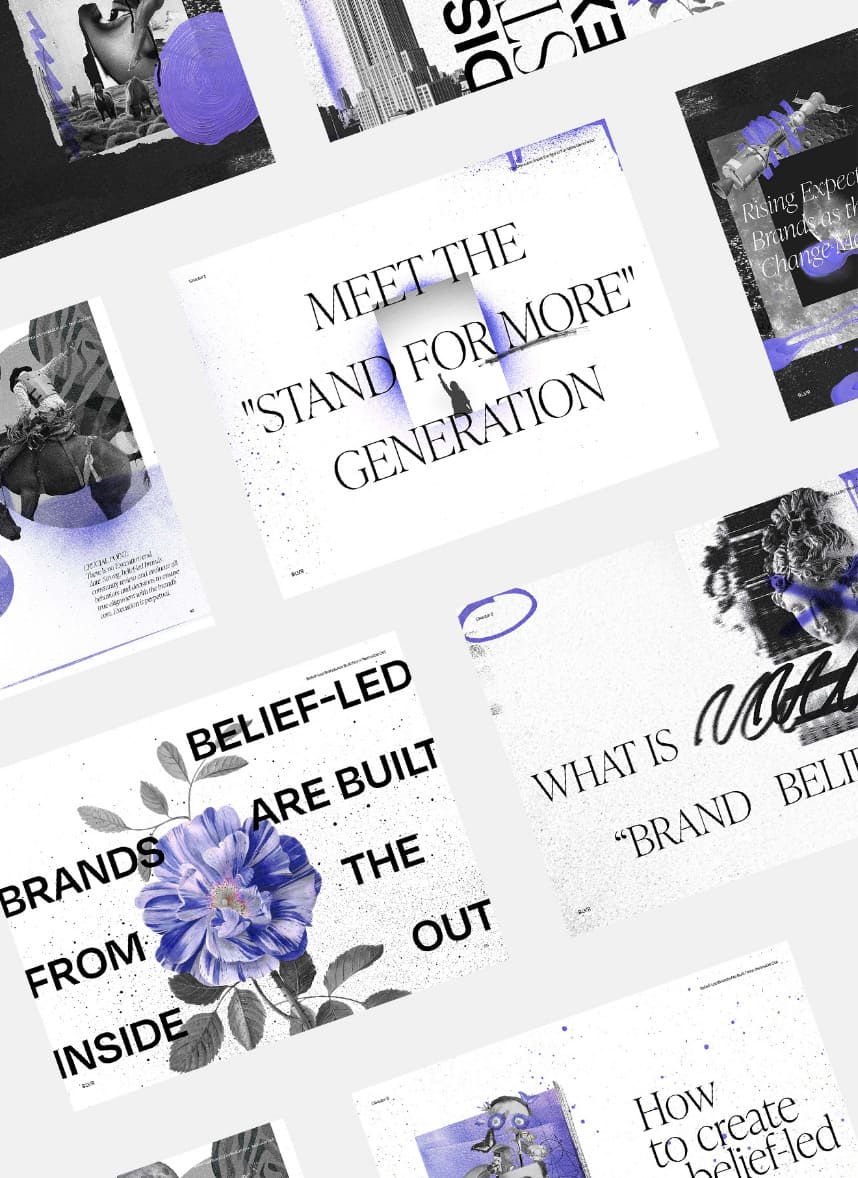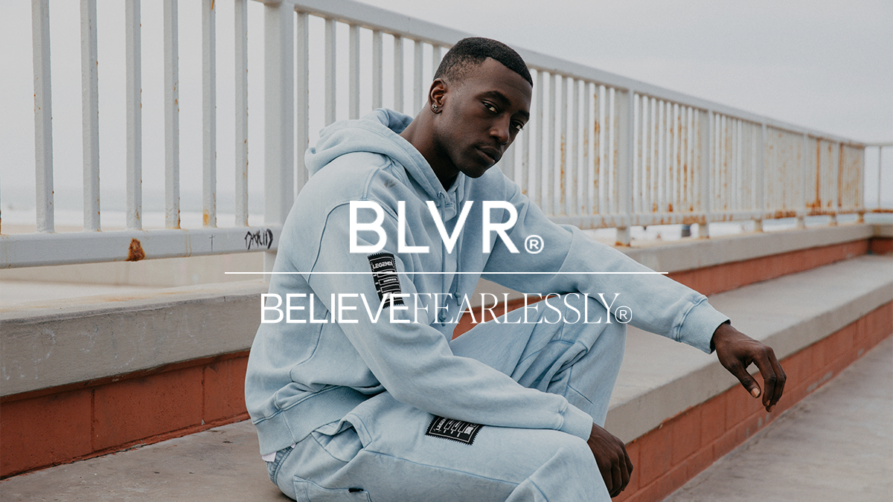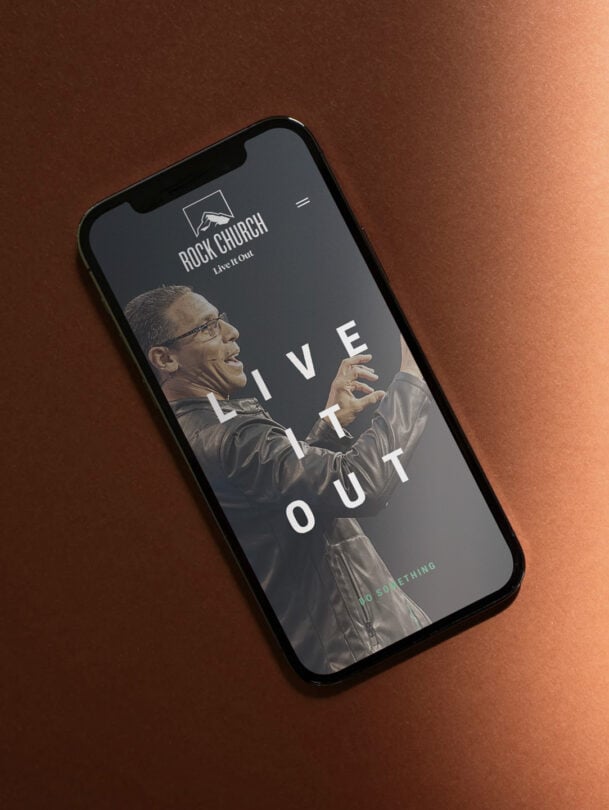
Brand Building 101: The 9 simple steps to build a belief-led brand
average read time: 11 Min
Articles
May 20, 2023
This article explores how to create a belief-led brand in 9 simple steps. We break down the actionable framework to discover your brand’s belief, craft the right brand strategy, and execute a plan to bring your belief-led brand to life. This actionable framework lets you see every step of the brand transformation process.
Belief-led brands don’t spontaneously burst into being. They also don’t evolve naturally from existing businesses without deliberate care and attention. True brand transformation occurs only after painstaking reflection, fearless decisions, courageous alignment, and the will to act. Thankfully, an established methodology exists for transitioning brands into belief-led world changers.
HOW DO YOU CREATE A BELIEF-LED BRAND?
As marketing shifts “from function to aspiration,” the most-promising opportunities exist for belief-led brands. A brand’s belief is the literal powerplant that keeps the brand alive; it is the heart of the brand that informs every action, decision, and behavior. Like any good construction project, your brand deserves to be built on solid footing. A fresh coat of paint can’t fix the structural weaknesses lurking inside.
Belief-led brands don’t spontaneously burst into being. They also don’t evolve naturally from existing businesses without deliberate care and attention. True brand transformation occurs only after painstaking reflection, fearless decisions, courageous alignment, and the will to act. Thankfully, an established methodology exists for transitioning brands into belief-led world changers.
WHO SHOULD BE PART OF THE BELIEF-LED BRANDING TEAM?
Belief-led brand transformation doesn’t happen through one person alone. It is a multidisciplinary effort that spans the entire organization. You need a team that can work synergistically whilst each bringing unique perspectives to the table. You’ll need to ensure the team is clear on how to manage effective change, keep key stakeholders updated, and, last but not least, be brave and rise to the occasion. This is a once-in-a-lifetime opportunity to impact the future of the company.
The Project Owner: Typically, this is an executive in the marketing or c-suite team. They are responsible for a successful branding project outcome. The project owner connects the brand and business strategy. They will make key decisions, communicate with senior stakeholders across the business, and drive the project to a successful outcome.
The Strategic Lead: This person is responsible for creating the strategic framework that underpins the brand. They will be the subject matter expert on the category, the competitors, and most importantly, the consumer. They will be able to connect a range of valuable data and insight to build a unique brand strategy driven by belief.
The Creative Lead: This person is responsible for interpreting the belief-led strategy into an authentic design system. They will lead the ideation of all tangible elements of brand creation – the name, the logo, the color palette, typography, comms, and more. They will also create the brand guidelines that will guide the internal teams to seamlessly execute a cohesive brand.
The Marketing Lead: This person will be responsible for aligning the marketing plans to the brand. They will define the marketing strategy. They will oversee any new branding campaigns, website updates, launch events, and all other types of content creation.
The Culture Lead: This person will be responsible for uniting the organization’s workforce under the brand. They will unite the workforce under a common belief, and they will attract, educate and retain top talent that lives out the values of the brand.
The CEO: Consumers expect belief to radiate from an organization’s highest leadership. In many instances, the brand’s belief stems from the CEO’s unique perspectives and values. If this is the case for your organization, the CEO will be responsible for sharing their vision, as well as living out the brand’s belief every day.
DISCOVERY: BEGIN BY LOOKING INWARD
The belief-led transformation process begins by looking inward. We recommend undertaking a discovery sprint that encourages the brand team to take philosophical stock of a brand from the inside out. You will dig deep into every aspect of the organization to help uncover the belief hidden in its core and how that can be translated into business success. This highly detailed process involves a lot of heavy lifting and objective reflection.
1. Uncover the beliefs at the heart of the company
Investigations into your company aim to reveal the inner workings of the organization itself: not only what it does, sells, and prioritizes, but what it believes. Belief often comes from the CEO/Founder and executive leadership teams, so stakeholder interviews are a great place to start. They reveal the stories and ideologies that sit at the heart of the company. Then, catalog product and service offerings, noting their audience and purpose. You could also create an organizational chart that includes all employee levels and business units to determine how the organization is structured and why.
2. Define the category and competitive dynamics. Identify how belief can help you stand out
Understanding the category dynamics will help you identify the unmet need or opportunity for growth. Begin by analyzing industry-specific market reports to understand how the category is segmented. You’ll be able to gain actionable insights, break down trends, and identify the drivers moving the category forward.
In order to stand out, you’ll need to understand what your competitive set is doing. Begin by identifying your competitive set, then conduct a comprehensive audit making note of its core offering, the beliefs that drive them, how they are positioned in the market, and its brand personality. Create a perception map to identify the category norms where the white space lies.
3. Explore the beliefs driving culture
Human needs and opinions evolve in tandem with societal changes. A cultural review places brands in the context of time and place. You’ll want to analyze the larger societal trends directly and tangentially related to the industry, brand, and customers. Identify any social, economic, educational, religious, or other movements that may impact consumer perception of your brand, either positively or negatively. Round out your cultural deep dive by interviewing academics and journalists with expertise in adjacent fields to learn about market projections and predictions or purchase a few market reports.
4. Identify your target audience & beliefs that drive them
Today’s consumers, the heart of every business, shop with their values, not just their wallets. Begin by using demographics to understand your audience. Next, seek to understand their behaviors – accompanying consumers on shop-alongs is a great way to understand different brand perceptions and behaviors during the shopping experience. Then, seek to understand goals, frustrations, motivations, and mindsets. Use social listening tools to see what conversations matter. Conduct focus groups or interviews centered on their beliefs, attitudes, behaviors, and pain points.
STRATEGY: BUILD YOUR BRAND FRAMEWORK
In the strategic framework sprint, organizations analyze information obtained through the brand discovery process, synthesizing insights and zeroing in on a brand’s true essence. Together the brand team will create a brand strategy. This strategy is critical to understanding who you are as a brand and what you believe. It will become the blueprint for how you connect with your customer, build loyalty, drive brand awareness and defend against category disruptors.
5. Build your brand strategy
Successful brand transformation that results in true impact and ROI has to be built from the inside out. That means rather than basing your brand strategy on what you sell; you should begin with what you believe about the world. This belief-led brand strategy will become the north star for your company, influencing every element of the brand and business strategy. You’ll need to define:
Belief: What is the belief at the heart of your organization?
Purpose: What is your organization’s authentic purpose that will drive your business forward?
Vision: What is the future world your organization will create?
Behavior: What behaviors will activate your brand’s belief?
Values: What are the belief-aligned principles that will guide your organization?
The final piece is to create a positioning statement. If the belief-led brand strategy is the thirty-thousand-foot view, the positioning statement is the ten-thousand-foot view. It is an explanation of your product or service, the need that it fills for your target audience, and how it is differentiated from the competition.
The final piece is to create a positioning statement. If the belief-led brand strategy is the thirty-thousand-foot view, the positioning statement is the ten-thousand-foot view. It is an explanation of your product or service, the need that it fills for your target audience, and how it is differentiated from the competition.
An important reminder: In the world of brand transformation, it’s often said that strategy is the art of sacrifice. Building belief is about focus. Sometimes, focus means releasing elements that are no longer serving the business. Whether it’s particular business strategies, products, target audiences, R&D policies, or any other aspect of the organization, defining a strong belief-led brand strategy may mean making drastic cuts and changes.
How to create a belief led brand:
Learn why belief-led brands inspire customer loyalty and bring a positive impact. Get actionable insights and frameworks.

EXECUTION: BRING YOUR BELIEF-LED BRAND TO LIFE
During the final phase of belief-led brand transformation, brands put their well-devised plans into action through a mindful brand experience. You’ll bring your belief-led brand to life through every expression, touchpoint, and action of your brand.
6. Crafting a brand identity
Your brand identity is a badge of honor. It is the design system that connects your customer to your company. It helps you move away from the pack and create your own path.
When developing your brand identity, you’ll need to think about elements like:
• Logo and/or wordmark
• Typography
• Color palette
• Photography styling
• Illustration styling
• Iconography or other graphical elements
Whether you’re designing the visual identity yourself or working with a top branding company like BLVR®, it is imperative to think about how the brand will visually represent your brand promise. As you design, consider creating visual tension. We like to think about bold looks that stands out mixed with intentional visual nods to a brand’s belief. Also, consider how flexible the design system is; it must be able to scale over time and account for every need within the brand.
7. Crafting a brand story
Your brand’s story is an emotive expression of your belief that drives consumers, employees, and investors to action. It will define what your brand communicates and how it is communicated. From your brand voice through to flexible messaging frameworks, it becomes a copywriter’s playbook to talk to your customers in an authentic and credible way.
In order to craft your brand story, you’ll need to work on defining elements like:
• Tagline
• Tone of voice
• Boiler-plate copy
• Messaging frameworks
We recommend working on the brand identity and brand story in tandem as they represent both sides of the brand – visual and verbal. That way, the beats of the brand story will match the visual tone of the brand.
8. Rolling out your brand
During the final phases of belief-led brand transformation, it’s time to put your well-devised plans into action. You’ll need to create tangible deliverables for the brand. When implementing your brand, you’ll be thinking about every element of customer and employee experience. Your rollout should be holistic, intentional, and consistent, so aim to have everything launched at the same time.
You’ll need to consider all of the touchpoints across the customer experience, including:
• Website
• Product design and packaging
• Communication campaigns
• Events and activations
• Social media strategies
• Content marketing
• Employee branding
• Internal business materials
• Environmental design
9. Living it out through brand behaviors
Successful rebranding initiatives are more than just rolling out a new logo or tagline. It’s about the actions you take to live out your brand’s belief. Think of it this way – Every organization has behaviors – ways in which they communicate (both explicitly and implicitly) with their customers, employees, partners, and community. It’s important that these align with the new north star of your brand.
Begin by holding a behavior workshop with your team. Analyze your existing behaviors in light of the new brand to see which ones hold up and what else needs to be implemented. You’ll want to review all aspects of the business, including:
• Marketing & communications
• Company culture
• Product & service development
• Impact
BRAND TRANSFORMATION BEGINS NOW
Building a belief-led brand is a revolutionary way of doing business. True brand transformation changes your organization from the inside out. Your brand-building process has to follow the same trajectory: from the inside out.
This practice may sound challenging (and it is), but how are your customers and employees faring with your current operation?
Now is the time for you to look critically at your company’s core beliefs, purpose, and behaviors and consider what you want the future to look like. Be brave, and drive meaningful change. Your business will thank you for it.
Would you like to learn more?
Be sure to check out more thought leadership in our belief-led transformation series.
- Belief-led brand transformation: The new way of brand building
- New consumer segmentation: Meet the Stand For More generation
- Return on belief: The business case for belief-led transformation
About the author(s)
01
© BLVR
SD / CA




